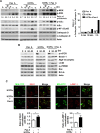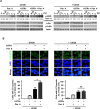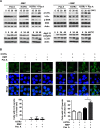Pasakbumin A controls the growth of Mycobacterium tuberculosis by enhancing the autophagy and production of antibacterial mediators in mouse macrophages
- PMID: 30865638
- PMCID: PMC6415846
- DOI: 10.1371/journal.pone.0199799
Pasakbumin A controls the growth of Mycobacterium tuberculosis by enhancing the autophagy and production of antibacterial mediators in mouse macrophages
Abstract
Tuberculosis (TB) is a chronic infectious disease caused by Mycobacterium tuberculosis (Mtb) and remains a major health problem worldwide. Thus, identification of new and more effective drugs to treat emerging multidrug-resistant TB (MDR-TB) and to reduce the side effects of anti-TB drugs, such as liver toxicity and other detrimental changes, is urgently needed. In this study, to develop a novel candidate drug for effective TB treatment with few side effects in the host, we selected pasakbumin A isolated from Eurycoma longifolia (E. longifolia) Jack, which protected host cells against Mtb infection-induced death. Pasakbumin A significantly inhibited intracellular Mtb growth by inducing the autophagy via the ERK1/2-mediated signaling pathway in Mtb-infected macrophages. We further investigated whether pasakbumin A could be used as a potential adjuvant for TB treatment. Treatment with pasakbumin A and anti-TB drug rifampicin (RMP) potently suppressed intracellular Mtb killing by promoting autophagy as well as TNF-α production via the ERK1/2- and NF-κB-mediated signaling pathways in Mtb-infected cells. Our results suggest that pasakbumin A could be developed as a novel anti-TB drug or host-directed therapeutic (HDT) strategy to protect against host cell death and improve host defense mechanisms against Mtb infection in macrophages.
Conflict of interest statement
The authors have declared that no competing interests exist.
Figures







Similar articles
-
Guttiferone K Exerts the Anti-inflammatory Effect on Mycobacterium Tuberculosis- (H37Ra-) Infected Macrophages by Targeting the TLR/IRAK-1 Mediated Akt and NF-κB Pathway.Mediators Inflamm. 2020 Oct 10;2020:8528901. doi: 10.1155/2020/8528901. eCollection 2020. Mediators Inflamm. 2020. PMID: 33100904 Free PMC article.
-
Effect of urolithin A on intracellular survival of Mycobacterium tuberculosis by regulating AKT-FOXO1-mediated autophagy.mSphere. 2025 May 27;10(5):e0006125. doi: 10.1128/msphere.00061-25. Epub 2025 Apr 10. mSphere. 2025. PMID: 40207917 Free PMC article.
-
Macrophage targeted graphene oxide nanosystem synergize antibiotic killing and host immune defense for Tuberculosis Therapy.Pharmacol Res. 2024 Oct;208:107379. doi: 10.1016/j.phrs.2024.107379. Epub 2024 Aug 30. Pharmacol Res. 2024. PMID: 39218421
-
Autophagy: A new strategy for host-directed therapy of tuberculosis.Virulence. 2019 Dec;10(1):448-459. doi: 10.1080/21505594.2018.1536598. Epub 2018 Nov 2. Virulence. 2019. PMID: 30322337 Free PMC article. Review.
-
[Development of antituberculous drugs: current status and future prospects].Kekkaku. 2006 Dec;81(12):753-74. Kekkaku. 2006. PMID: 17240921 Review. Japanese.
Cited by
-
The Oral Delivery of Water-Soluble Phenol TS-13 Ameliorates Granuloma Formation in an In Vivo Model of Tuberculous Granulomatous Inflammation.Oxid Med Cell Longev. 2021 May 14;2021:6652775. doi: 10.1155/2021/6652775. eCollection 2021. Oxid Med Cell Longev. 2021. PMID: 34093961 Free PMC article.
-
Mycobacterium tuberculosis: Pathogenesis and therapeutic targets.MedComm (2020). 2023 Sep 4;4(5):e353. doi: 10.1002/mco2.353. eCollection 2023 Oct. MedComm (2020). 2023. PMID: 37674971 Free PMC article. Review.
-
Host-Directed Therapies for Tuberculosis.Pathogens. 2022 Nov 3;11(11):1291. doi: 10.3390/pathogens11111291. Pathogens. 2022. PMID: 36365041 Free PMC article. Review.
-
Lysophosphatidylcholine Enhances Bactericidal Activity by Promoting Phagosome Maturation via the Activation of the NF-κB Pathway during Salmonella Infection in Mouse Macrophages.Mol Cells. 2020 Dec 31;43(12):989-1001. doi: 10.14348/molcells.2020.0030. Mol Cells. 2020. PMID: 33250450 Free PMC article.
-
Rapamycin Promotes ROS-Mediated Cell Death via Functional Inhibition of xCT Expression in Melanoma Under γ-Irradiation.Front Oncol. 2021 Apr 20;11:665420. doi: 10.3389/fonc.2021.665420. eCollection 2021. Front Oncol. 2021. PMID: 33959512 Free PMC article.
References
Publication types
MeSH terms
Substances
LinkOut - more resources
Full Text Sources
Miscellaneous

